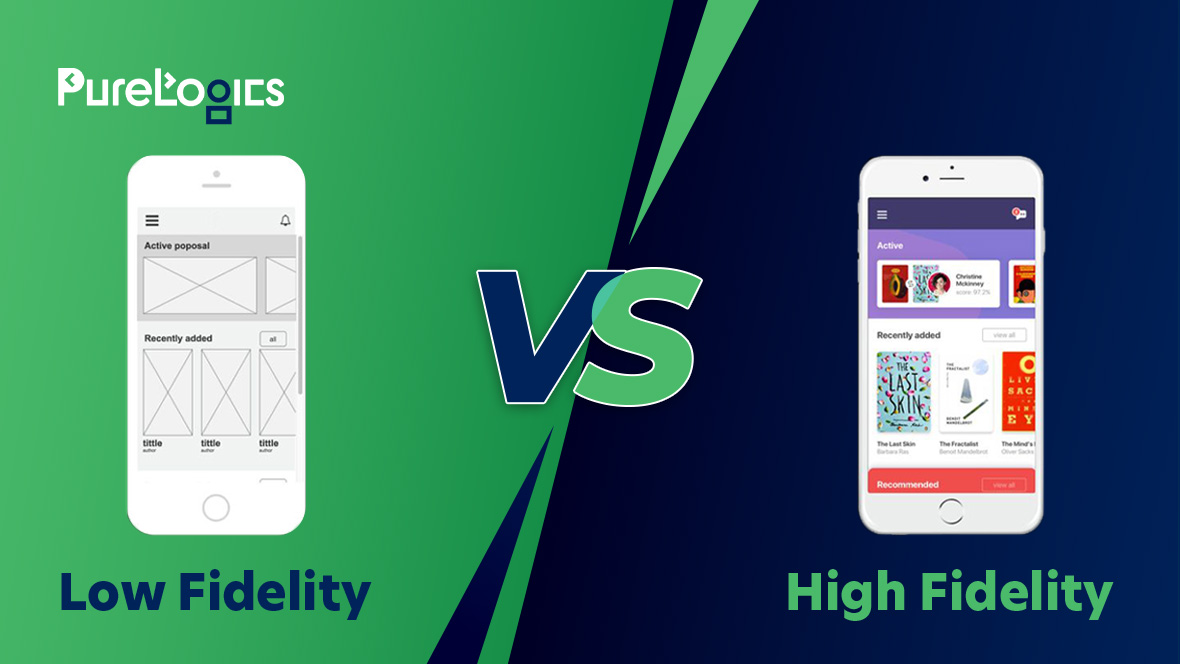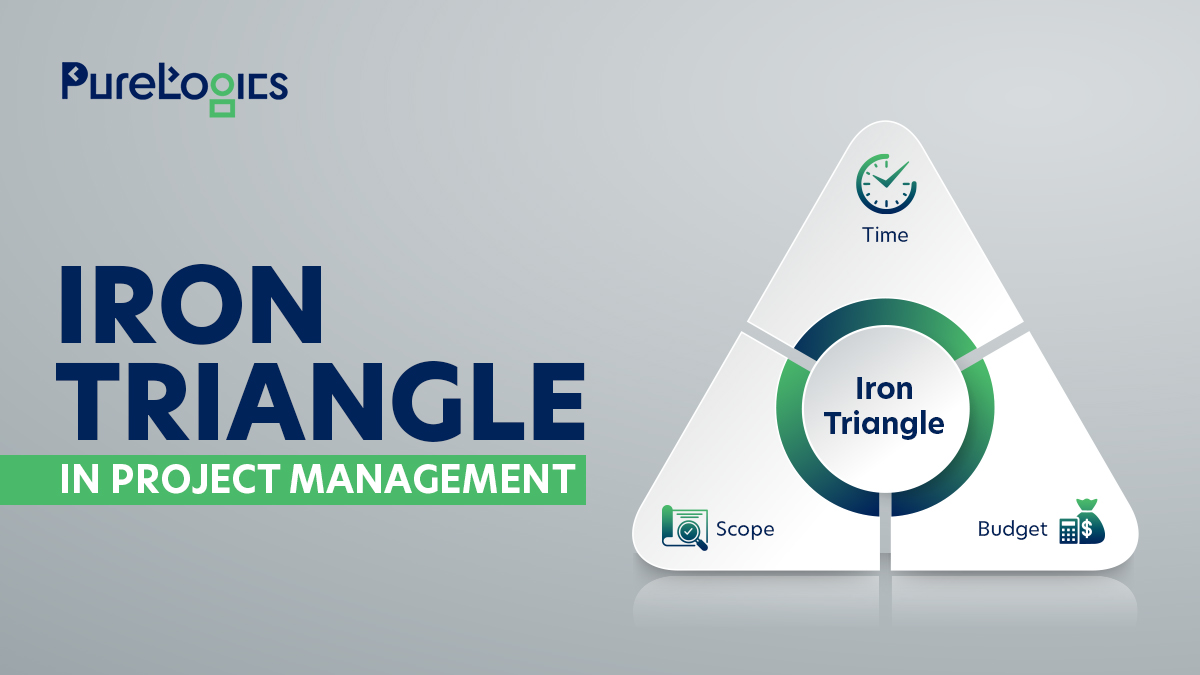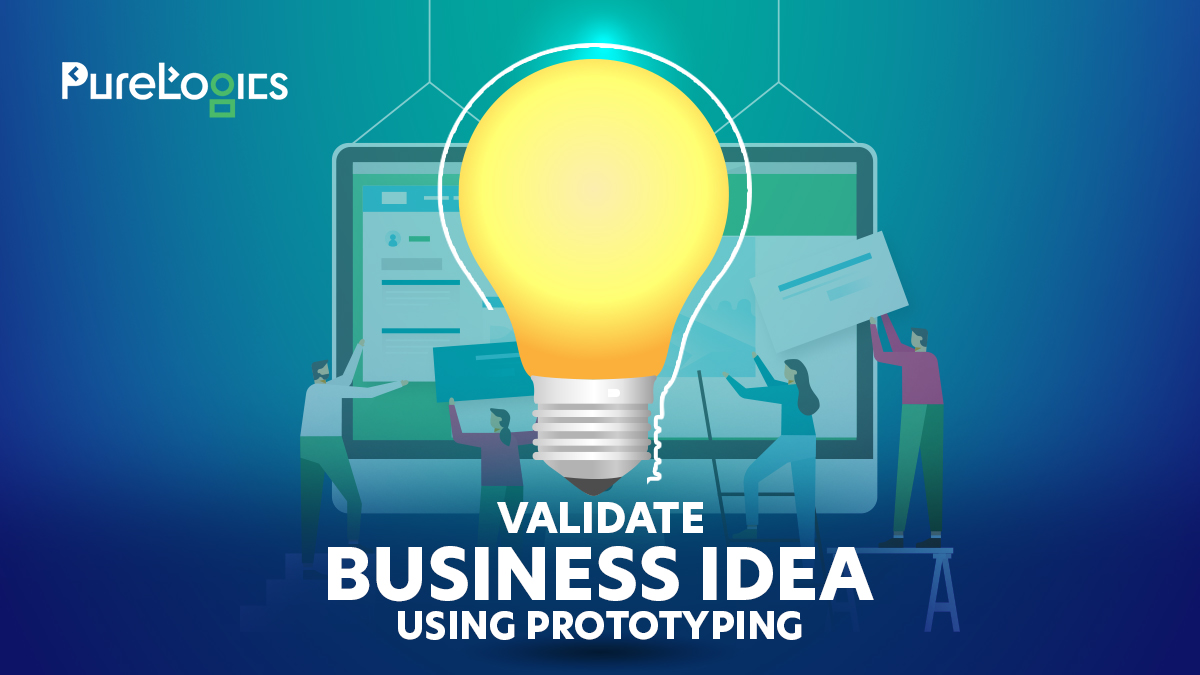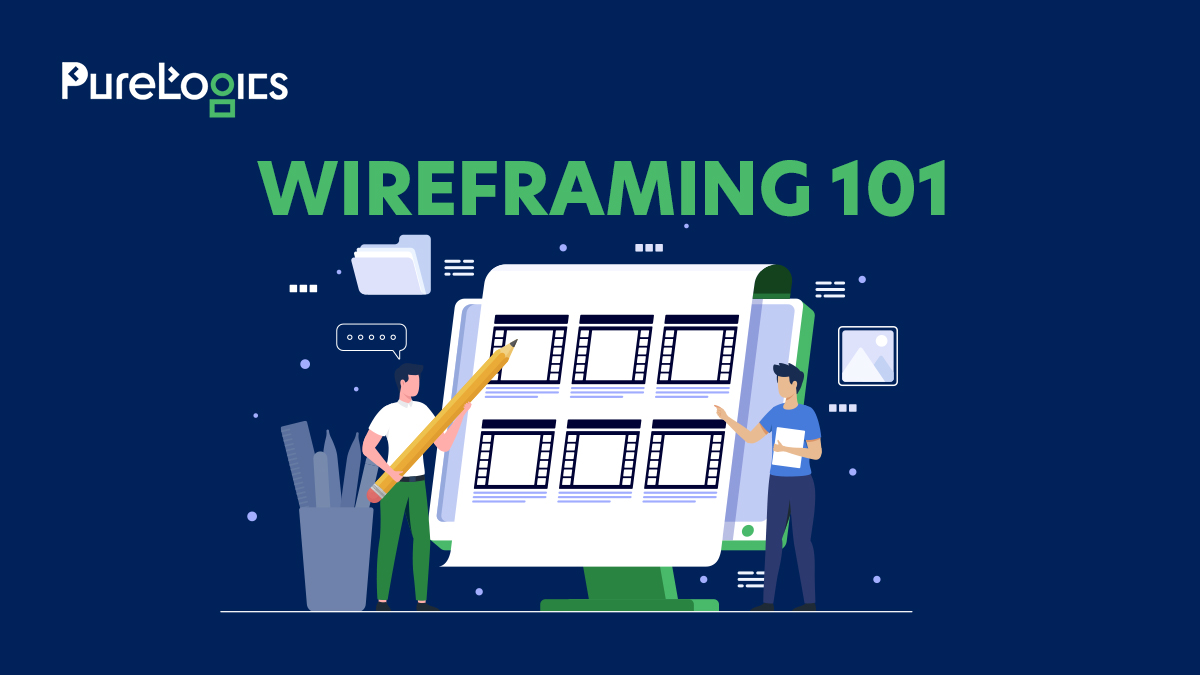Both markets and customers evolve continuously. New trends and requirements enter the game, and the previous service standards stop responding to the demands and expectations of the customers. It is natural that things never remain static. So, it is important to not only master the product development life cycle (PDLC) but also adapt products and software solutions to maintain your position as an industry leader.
The product development lifecycle is a seven-stage plan that includes developing and launching new products to the market. It has multiple steps like idea generation, idea screening, concept development and testing, business analysis, product development, market testing, and commercialization. Every step of the PDLC is essential to obtaining a successful outcome.
In this blog post, you will learn the stages of the product development life cycle with examples. Moreover, you will understand the adaptive process that transforms ideas into real-world products, aligning with long-term company goals and market needs.
What is the Product Development Lifecycle?
The product development life cycle is an organized process. It provides you with an all-inclusive roadmap of every activity you perform to successfully present an idea to your target market and customers.
PDLC guides the development of a product from the start, through design and manufacturing, to the final market launch, and gathering customer feedback. This cycle involves different departments in a company such as product managers, designers, developers, QA testers, and others.
The result? Delivering not just products, but transformative experiences that consistently resonate and provide genuine value to your discerning customers.
Product Development Life Cycle vs. Product Development Strategy
PDLC focuses on the operational aspects of product development. While the product development strategy includes the broader planning and decision-making processes.
| Aspect | Product Development Lifecycle | Product Development Strategy |
| Focus | Operational execution of product development | Broad planning and decision-making |
| Timeline | Sequential And Time-Bound Stages | Ongoing And Adaptive Planning |
| Scope | Execution Of Development Phases | Comprehensive planning for overall product vision |
PDLC is like the tactical execution of the strategy. In today’s highly-evolving business landscape, a company will only succeed if it has both a well-defined strategy as well as a seamless execution through PDLC.
Stages of Product Development Life Cycle with Examples
Following are the seven important steps of the product development lifecycle, each playing a distinctive role in the journey from idea generation to market launch.
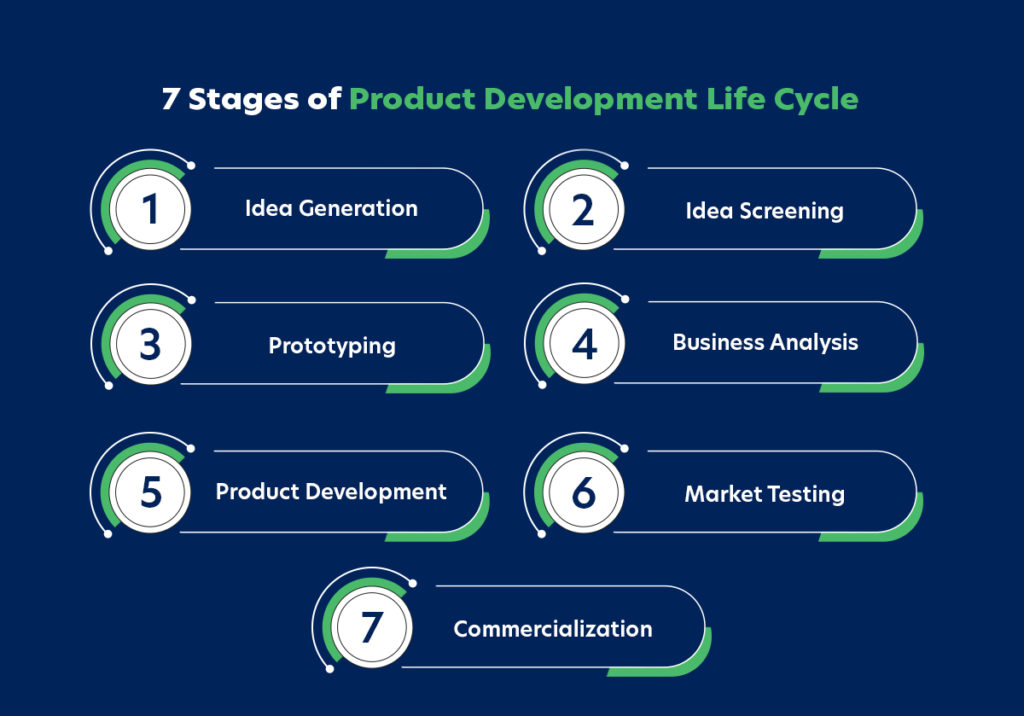
Idea Generation
Idea generation is the first step of the product development lifecycle and the birthplace of innovation. In this step, various sources like market trends, customer feedback, or the creative minds of the team are used to get product ideas and explore potential solutions to the problems.
For example, the Apple iPod was developed from the idea of a portable music player seamlessly integrating with the iTunes platform. It revolutionized portable audio experiences.
Idea Screening
Not every idea is a golden ticket. In this stage of the product development lifecycle, you assess the feasibility and potential of each idea. The goal of “Idea Screening” is to narrow the list of ideas to a single product or feature (must be worth pursuing).
For example, Coca-Cola continuously screens ideas for new beverage products. It always ensures that they match market demands and company capabilities.
Prototyping
Once an idea survives screening and you’re confident that your product has a potential audience, it is the right time to build a prototype. For this, you first need to know the important features and functions that must be included.
These features and functions will serve as your product’s foundation at the time of launch. Remember that these features must be on the basis of feedback you gathered during the idea screening process.
A company that builds software, their software engineering team develops an easy mockup of the application. They can develop a wireframe as well. However, if it’s a manufacturing business, their team will make a prototype and ask a group of customers or a focus group to give feedback about the prototype.
Business Analysis
In this stage, numbers come into play. Here, you need to evaluate your product’s financial viability. Find answers to these two questions. What are development and production costs? What’s the expected amount of revenue?
A rigorous business analysis was conducted on Amazon’s Kindle to ensure that it would be a profitable venture.
Product Development
Once you build your prototype or mock up and gather feedback from customers and focus groups, it’s time to create a minimum viable product (MVP).
This is not going to be a full-featured product the product development team envisioned during the idea generation and screening process. For example, Apple produced multiple prototypes and MVPs before deciding on the final product.
The main goal of this stage is to build an MVP and ship it as soon as possible. The team will have enough time to develop a final product.
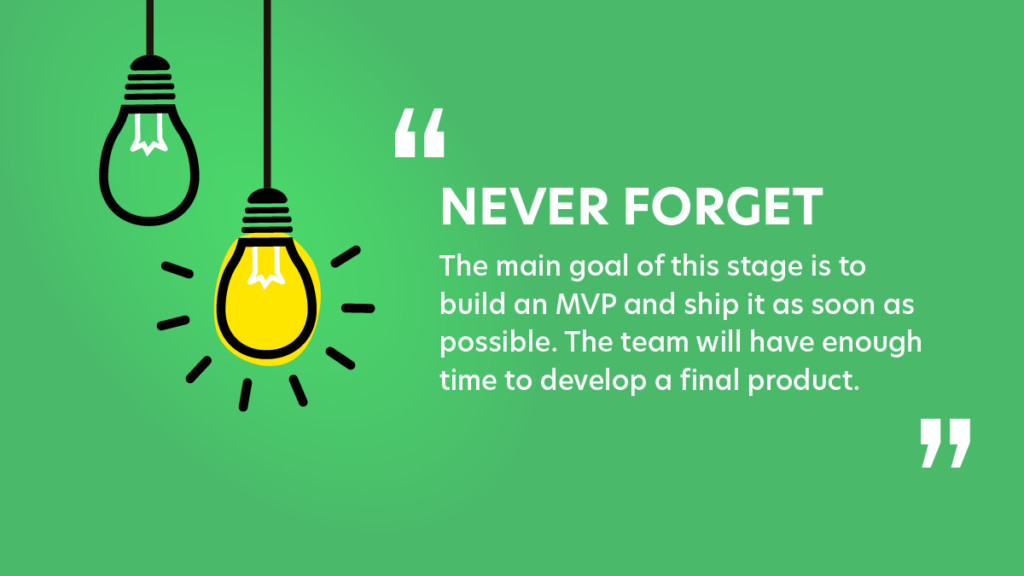
Market Testing
Before a full-scale launch, it’s prudent to test the product in a controlled market environment. For example, Microsoft gave limited group access to Windows 10 Insider Preview before its official release. It enabled them to find and address bugs and issues in the software.
Commercialization
After the stage of market testing, the product is ready for the world. Commercialization includes the launch of the product and the implementation of it on the website. You will be producing the product at a scale.
As a whole, marketing, distribution, and sales strategies are put into action. For example, the commercialization of Tesla’s electric cars completely transformed the automotive industry. The success was a result of a combination of state-of-the-art technology with a bold marketing strategy.
Product Development Lifecycle at a Glance
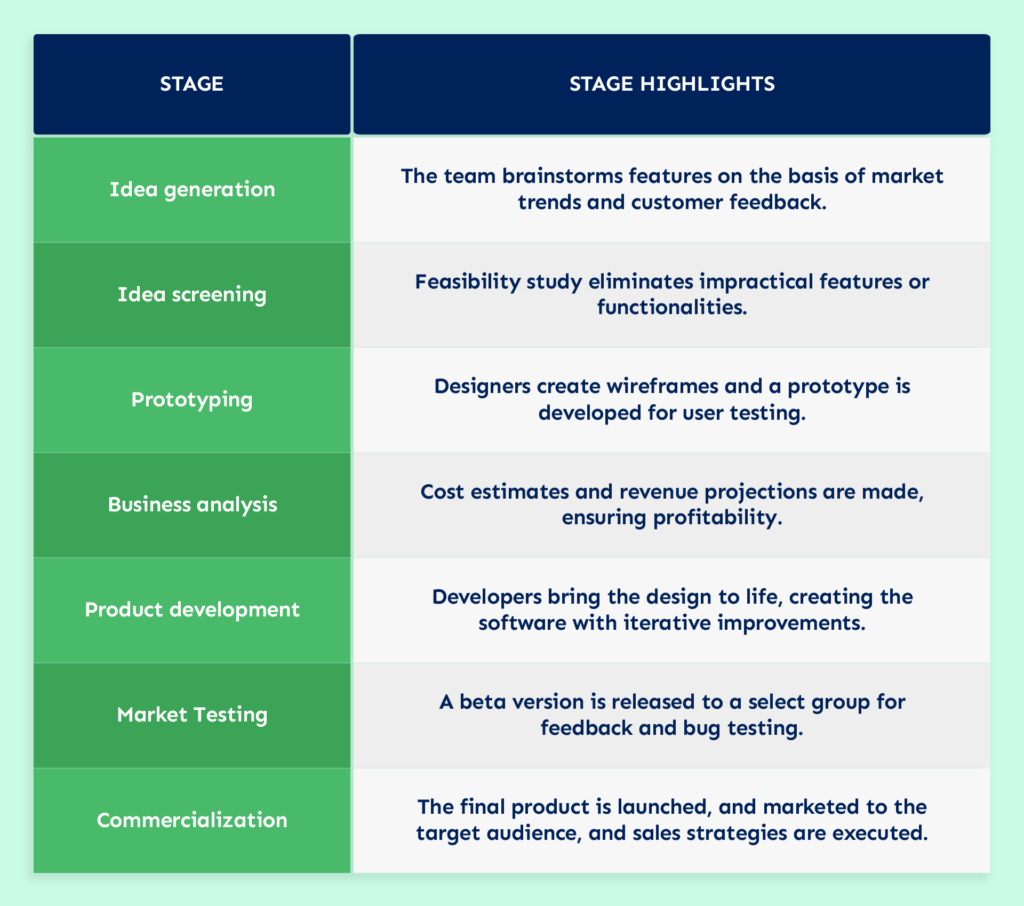
Final Thoughts
Mastering the product development life cycle is not just a skill; but a highly important and strategic imperative for businesses who really want to succeed in today’s fast-paced markets. The product development lifecycle gives you relief and makes the unknown understandable.
Yes, you can’t predict what is going to happen to your development. But you have a detailed outline of how all things will proceed in the ideal scenario. It will cost you nothing to employ it, but it is sure that it will work as a shield from the unexpected.
Remember that innovation is always a result of continuous process and PDLC has always been a trusted guide for product development teams.
Do you want to talk to our best and brightest product development engineers? Book a free consultation call of 30 minutes and build a product that will take your business to the heights of the Himalayas.
Product Development Life Cycle FAQs
Q.1. How long does a product development life cycle usually take?
The time duration of the product development life cycle usually depends on the complexity of the product. This development cycle can last from a few months to several years.
Q.2. Can we revisit the stages of the PDLC?
Yes, you can revisit the stages of the PDLC on the basis of customer feedback and changing market conditions. Remember that iterative development is common.
Q.3. How does the PDLC adapt to technological advancements?
The PDLC is dynamic and uses emerging technologies. It always ensures that your product stays relevant and competitive.
Q.4. What is the role of a product development team?
The product development team supervises and manages the entire PDLC. It combines skills in design, engineering, marketing, and more to ensure that you make a successful product launch.


 [tta_listen_btn]
[tta_listen_btn]
 December 13 2023
December 13 2023


